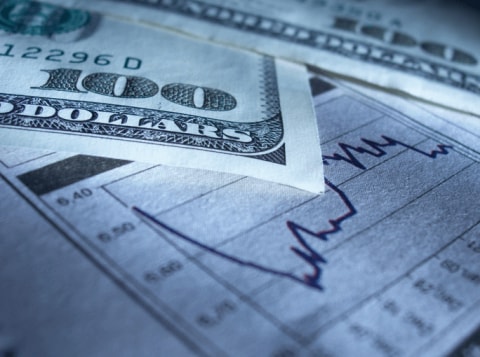
Forex signals
Forex signals are popular and innovative financial tools that can help you trade forex pairs. Forex signals, which are generated either by an automated program or by a trader, identify the best time to enter or exit a trade. A forex trading signal is essentially an alert for traders to either enter or exit a position (go long or go short). Forex signals are often based on specific times and prices and can be identified through technical or fundamental analysis. It is up to the trader to then decide whether or not to act on the signal.
It should be mentioned that, in a fast and liquid market like the forex market, a forex signal is helpful only if used at the right time. If received too late, the signal might become unreliable. Read on to discover the different types of forex signal, along with how to use them when trading currency pairs.

What are forex signals?
Forex signals can be defined as “buy” and “sell” suggestions and, in conjunction with technical and fundamental analysis, they provide information on the best time and price to enter a trade and profit from the predicted move in price.
Understanding when to open or close a trade is key to successful forex trading and is a crucial part of learning how to trade currency pairs. Professional traders have years of experience analysing chart patterns and scrutinising current events and news announcements to help them assess when to open or close a forex position. Technical analysts will look for signals to guide them when entering and exiting trades.
Free forex signals
Generally, the source of free forex signals falls into one of two camps: technical analysis and fundamental analysis.
- Technical analysis: the most popular source of forex signals detects technical indicators that appear on price charts. Technical analysis involves assessing historical price activity, a complex form of analysis that focuses on previous prices and historical support and resistance levels. This is more appropriate for identifying shorter-term price trends, therefore traders that prefer a trading strategy such as a forex scalping strategy, for instance, will often favour technical analysis.
- Fundamental analysis: this is suitable for longer-term investments based on the underlying economic health of countries. This is measured by economic indicators such as inflation data, manufacturing output and unemployment figures. Arguably the month’s key release is the US non-farm payrolls data, which is normally reported on the first Friday of every month. It gives the total number of paid US employees, excluding farm, general government, not-for-profit and private household workers.
Types of forex signals
Manual and automated forex signals
The main difference between manual and automated forex signals is that manual signals are generated by a person who often is a professional trader. Automated forex signals, on the other hand, are generated by computer software that analyses the market price action based on algorithms.
Free and paid forex signals
Some providers offer free signals (either as a trial or for an unlimited period of time), while other providers offer paid forex signals.
Entry and exit forex signals
Some signals providers only give entry signals, meaning that they provide a signal on when to open a position. Others provide only exit signals, meaning that they provide a signal on when to close a position.
Trade on 330+ forex pairs with us
Algorithmic forex signals
Some traders use trading robots or Expert Advisors (EAs) for their forex signals. An EA is a set of rules or an algorithm that places trades when specific criteria are met. EAs can be created by anyone with enough technical knowledge and are often sold online. Find out about automated trading with the MT4 platform.
How to trade forex signals
Each trader will use forex signals differently. However, as a rule of thumb, we have identified four basic steps that every trader should keep in mind:
- Select a currency pair
- Set an entry point
- Set a stop-loss order
- Input to take a profit
Benefits of forex signals
- They are time efficient. In forex trading, researching and analysing are very important skills that require a lot of time. With forex signals, traders don’t have to necessarily spend time analysing charts and patterns. However, you should still do your own independent research and not rely solely on signals.
- They help to minimise risks. If used correctly, forex trading signals can help you reduce the risk of losses by suggesting the right time to either enter or exit a trade and consequently where to place your stop loss.
- It is a quick learning curve. Forex signals can help traders to understand how these signals correspond to their trades.
Are forex signals reliable?
With a trusted forex signals provider, forex signals can be very reliable source of information. However, it should be noted that, there are some unscrupulous and less reliable services out there so it is important to exercise diligence when using a forex signal provider.
The biggest disadvantage of using trading signals is that the forecast is not always accurate. However, this risk can be minimised by taking some precautions, such as training and practise. Clients of CMC Markets can trade with £10,000 worth of virtual funds on our demo account, without risking real money. Register for a demo account now.

